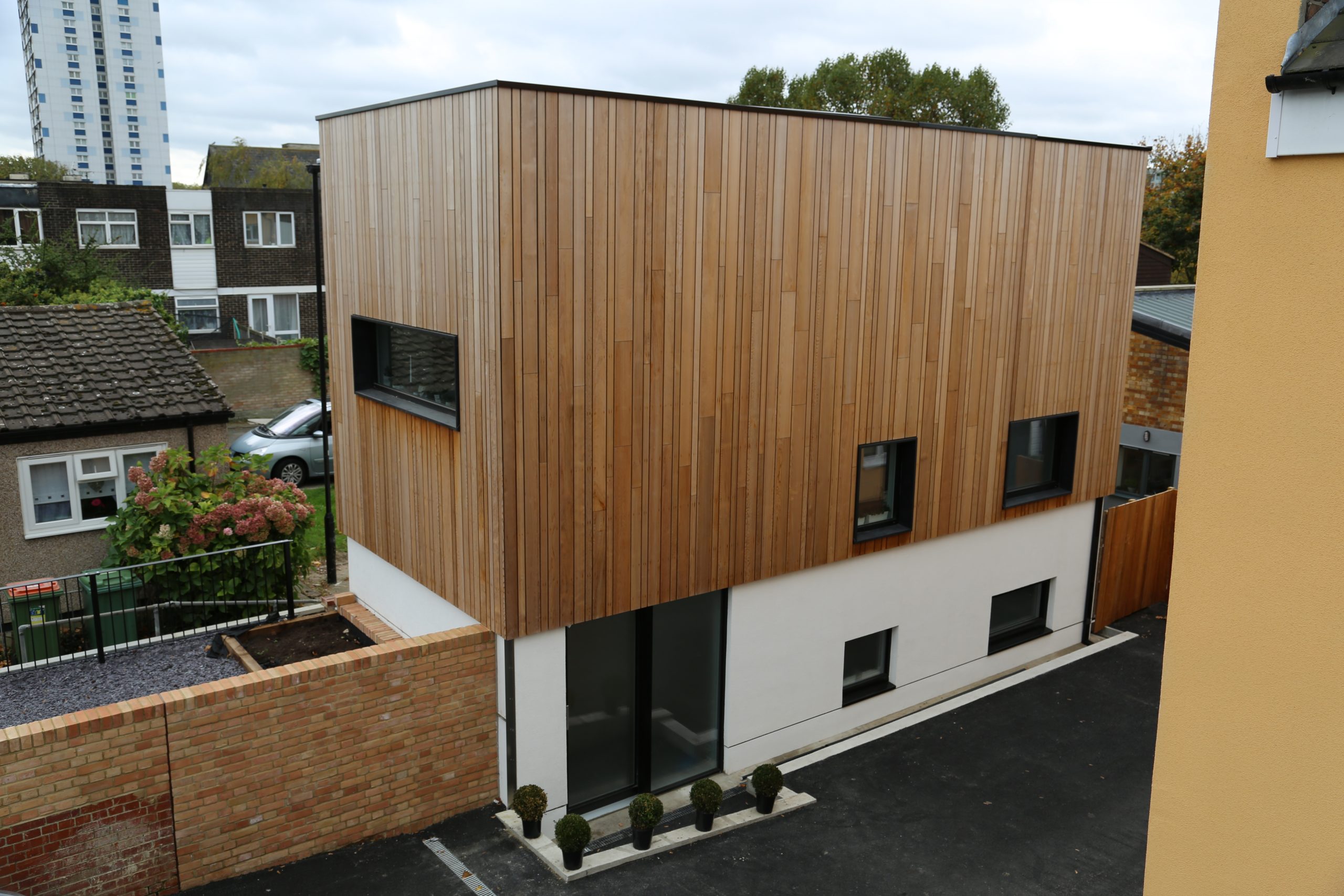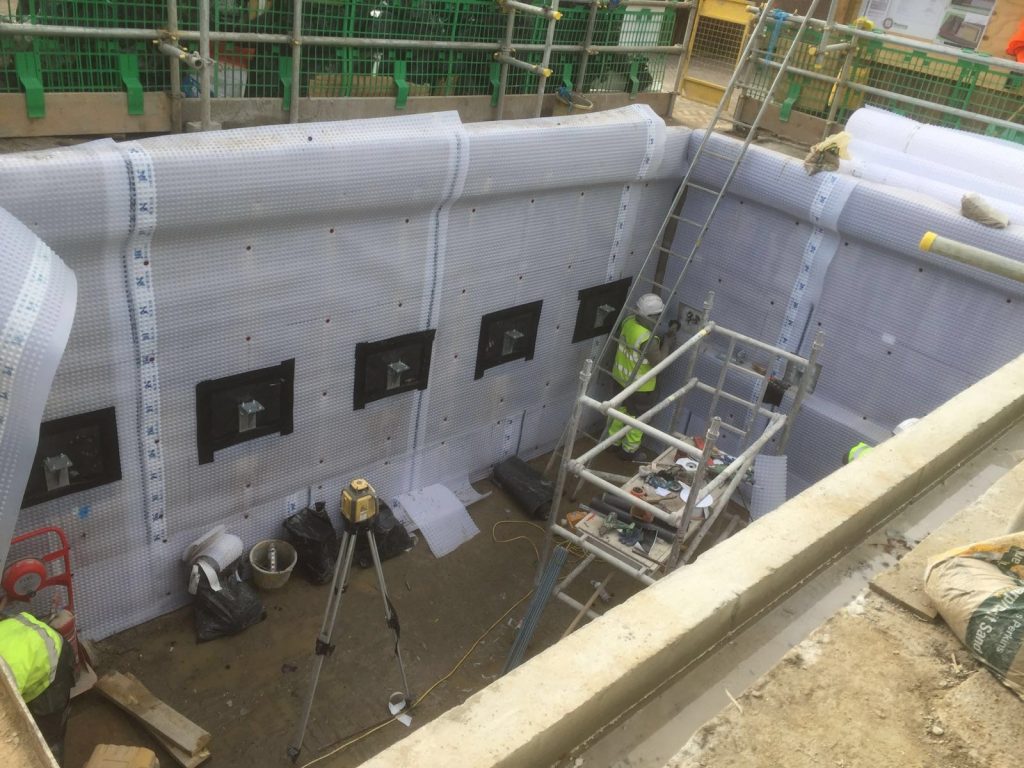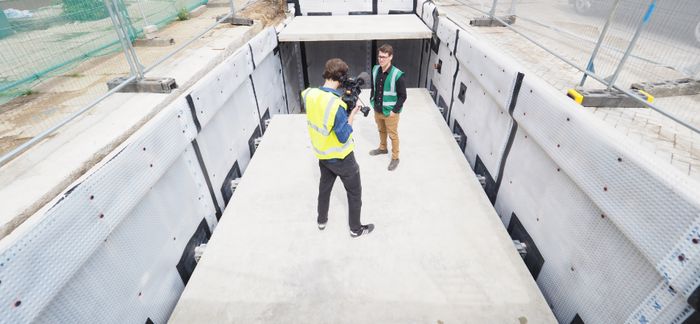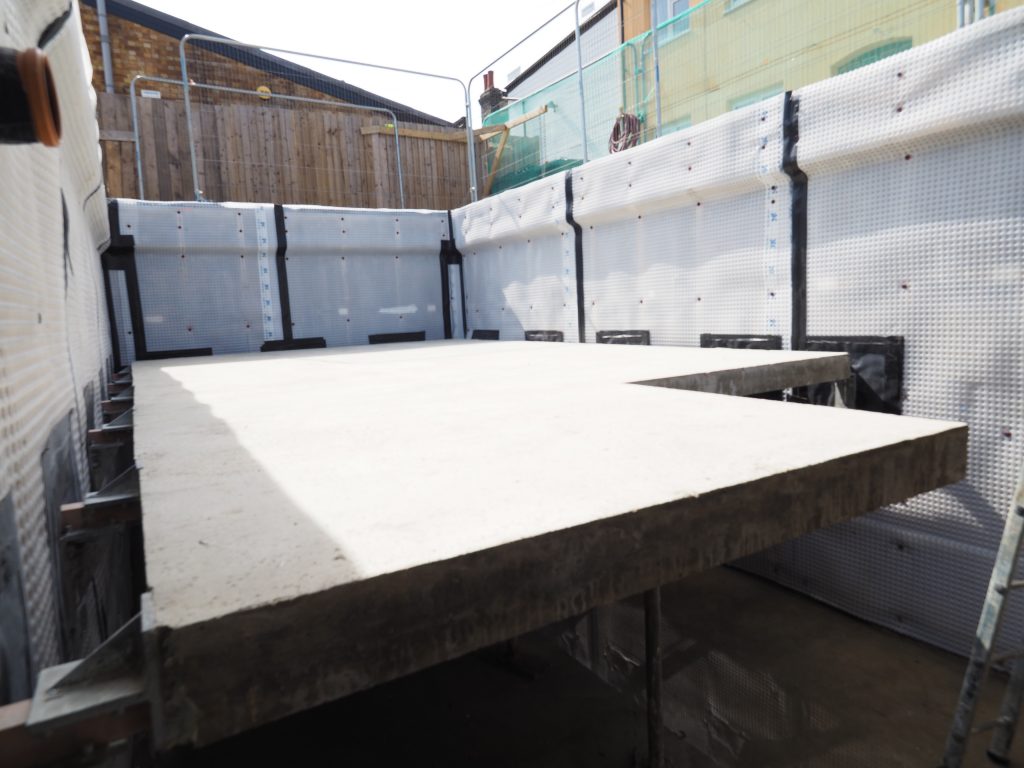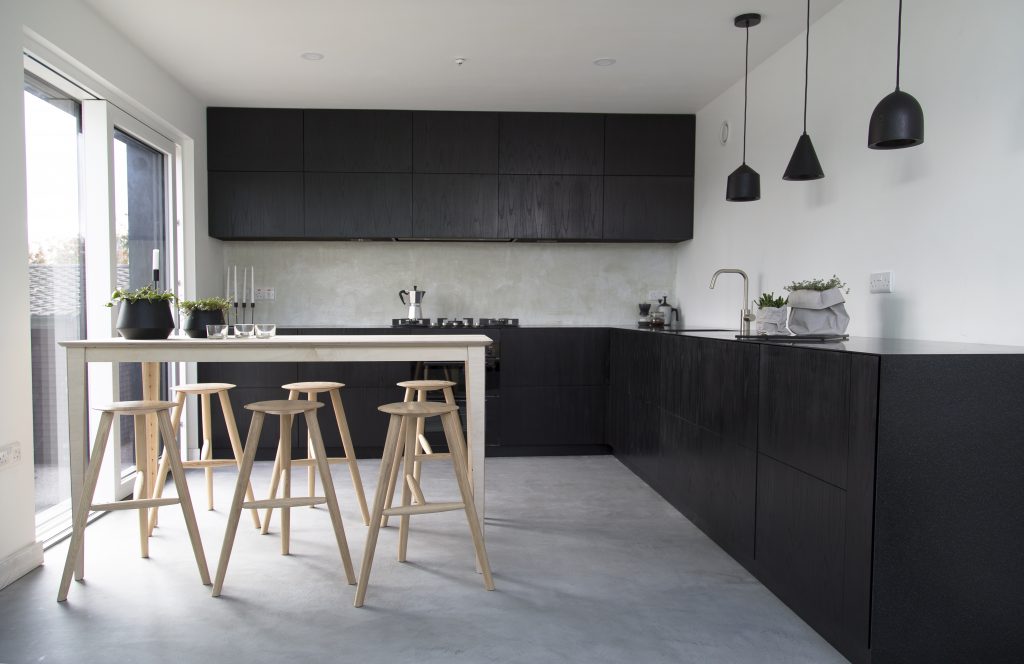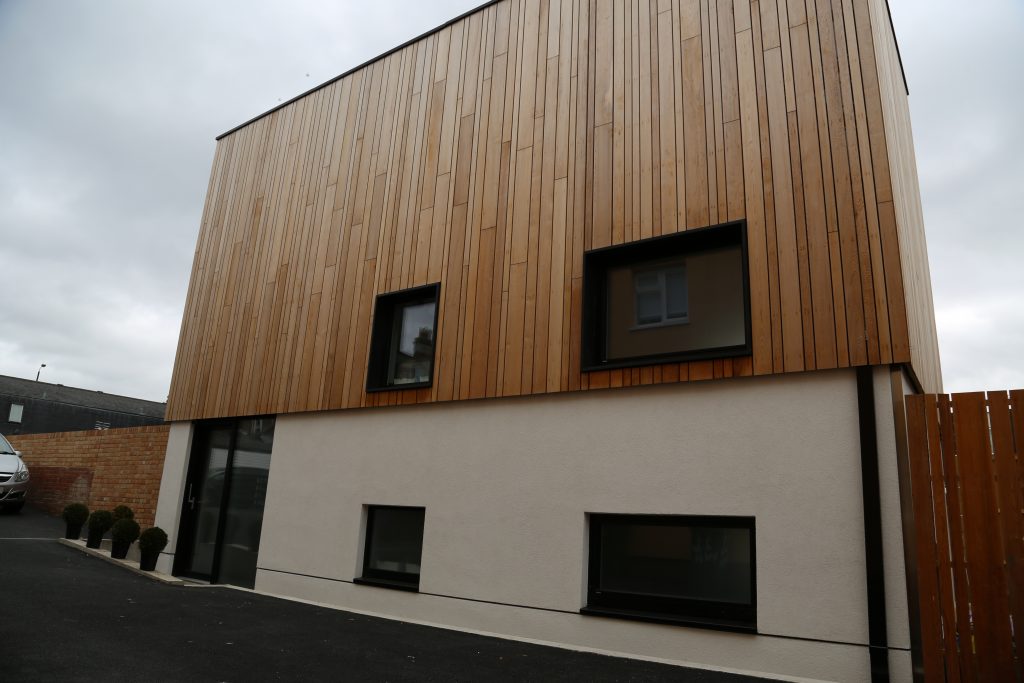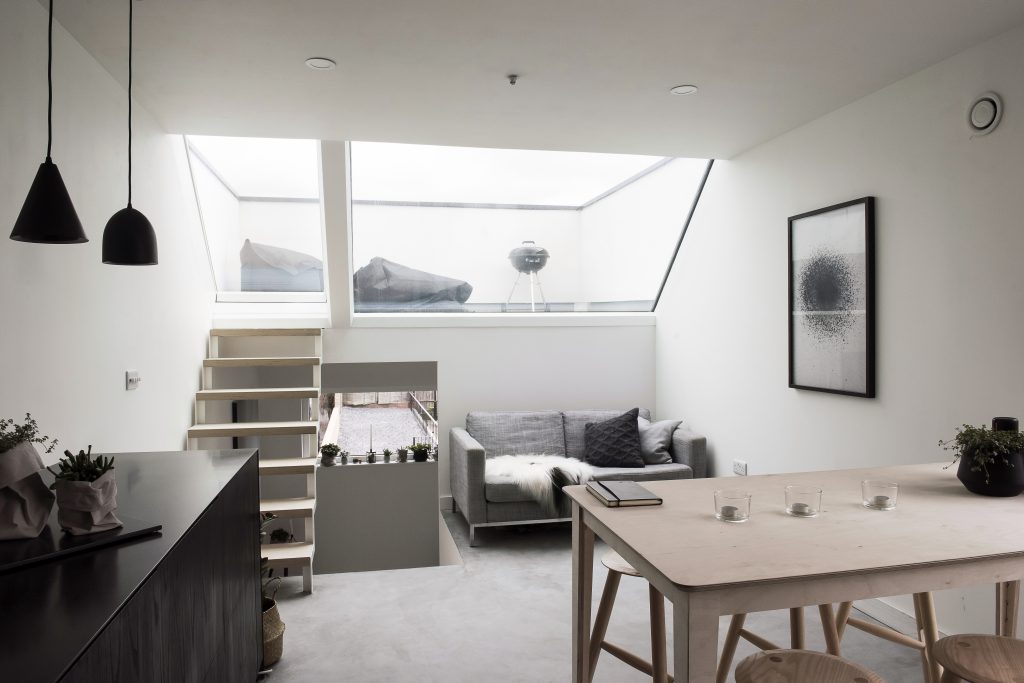01732 360 095
Summary
Fed up of renting in London, Joe and Lina decided to build their own on a tiny 38m² plot of land in East London. With a budget of just under £200k they set about delivering Joe’s innovative concept for a six half-floor house with floating concrete slab, designed to maximise the space into a 83m² home, all whilst being filmed by Channel 4’s Grand Designs. However, things soon went south…
The Project
Within weeks of the project beginning in October 2015, rogue contractors had performed a disastrous basement excavation attempt contrary to the Structural Engineer’s instructions, leaving unsupported banks of earth falling in beneath the street and shutters bursting inwards under the weight of the concrete.
This first attempt, described as “spectacularly shambolic” by Kevin McCloud, more than doubled Joe and Lina’s budget for the excavation from £48k to £100k, and caused months of delays in order to get the project back on track.
The Solution
Having already contacted Newton Waterproofing Systems to consult on the poor workmanship, Joe and Newton soon determined that if he were to save his home and get it out of the ground, he would need a specialist contractor to actively communicate, collaborate and listen to him as both the engineer and client.
MJ Rooney Construction came on board as contractors in November 2015, and following discussions to determine exactly what was required, modelled the entire project in 4D to ensure that all potential difficulties were solved before work began.
With the right lines of communication in place, work recommenced in late January 2016, with the first challenge being to make safe a 3.5 metre high bank of unsupported earth with sheet piles, before creating a new and waterproof structural shell of reinforced concrete.
The Result
With the shell of the structure in place, Newton and MJ Rooney’s next challenge was a much more welcome one, as they created a bespoke waterproofing solution to accommodate Joe’s ingenious design for a suspended reinforced slab that acted as both a floor and a prop force against the lateral pressure from the basement walls.
This entire slab rested on brackets designed by Joe and his structural engineer, insulating it from the external walls by ensuring minimal contact, and only making contact through insulated blocks with enough compressive strength to take the vertical loading. The design also created a cavity around the slab that can be fully insulated, allowing the slab to be used as a thermal mass inside the building without having to insulate the entire external envelope.
Working closely with Joe, a solution was devised that enabled the continuity of the waterproofing behind the brackets without compromising the structural design.
Speak to our friendly, expert team
Our staff are able to provide guidance for projects of all sizes, whether you require some general advice about damp or waterproofing, or support with technical drawings and specifications.

